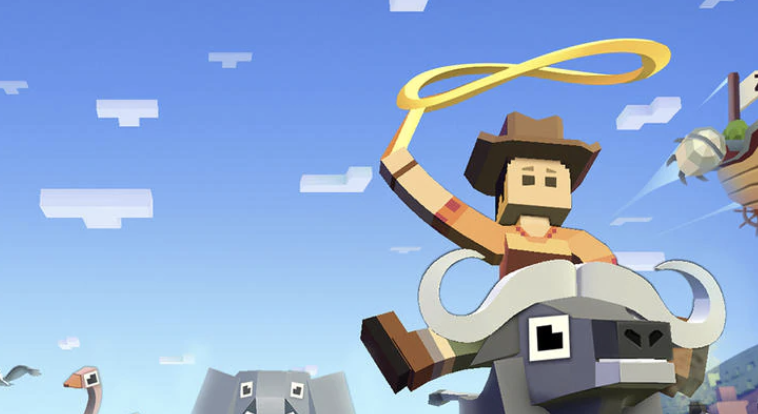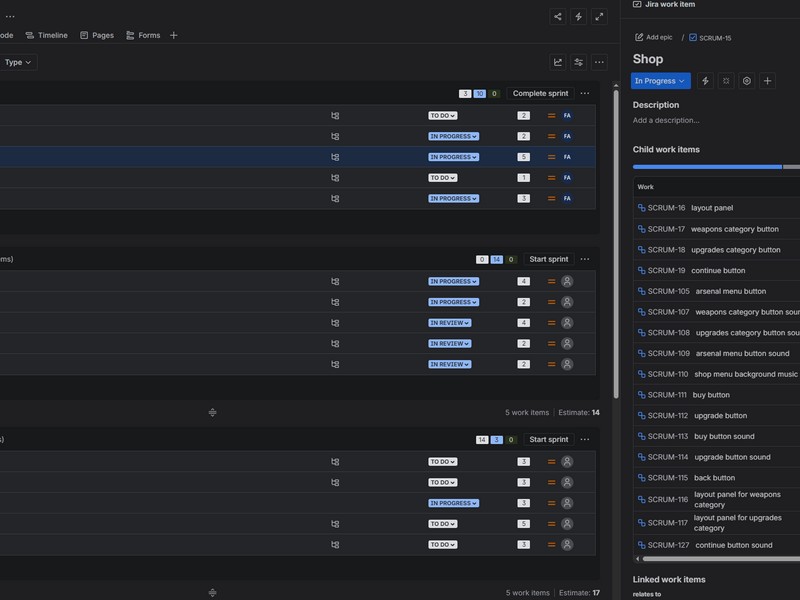
Why Agile?
Exercise
·
Beginner
·
+60XP
·
25 mins
·
Unity Technologies

Here you'll learn the fundamentals of Agile, the process used by the vast majority of game makers to help contain the chaos of software development and still deliver exciting, well-made games. We'll give you special resources for making it work for you as a solo developer or small team.
By the end you’ll also turn in your first major milestone: the vertical slice
1. Agile Development
2. Agile for Small Teams or Solo Devs
3. Real-life Examples from Solo Developers
Use these resources to dive further into Agile, learn about the Agile Manifesto and review how solo developers utilize it's methods to make progress in their work:
- Escaping the Indie Shame Spiral. A producer at Electronic Arts goes indie and ... fails. Agile to the rescue! “The critical first step to escaping the shame spiral was to start running a personal scrum as though I was leading a team back at EA.”
- Scrum Of One: How to Bring Scrum into your One-Person Operation. A solo app developer shares an in-depth look at how he uses Scrum/Agile methods to make steady progress on his work. “Scrum seemed to touch on three of the biggest pain points in my process: More productivity, more profit, more happiness.”
- For reference, here’s the original (very short) Agile manifesto.
4. Sprint Plan for your Vertical Slice - Part 2
In this assignment you’ll make your sprint plan for the next version of your vertical slice. As a reminder a sprint plan is a prioritized list of tasks to work on in the next week.
You’ve actually already made a sprint plan – you did it last week when you pulled things out of your project backlog to work on, according to priority.
The full process (i.e. the one used by professionals) has a few more steps, but the goal is still the same: step back and decide how you can best move your game forward this week.
The instructions will be the same for each week for the rest of the project. When you’re finished you’ll turn in some form of your sprint plan as screenshots or a recorded video.
Weekly Sprint Review and Plan
These instructions describe the exact process that professional teams of all sizes use to manage the work of game development. It has several steps, and it looks long because each step is explained, but it should only take 5-10 minutes to do for a small project.
You’ll use the same system you used when you made your backlog, whether that’s a spreadsheet, a to-do manager like Trello, or a dedicated system like JIRA.
Part 1: Review
Taking a couple of minutes to learn from your experience each week will make you a better developer.
- Get better at estimating. Look at your current sprint plan – that’s the to-do list you made last week. Observe what you did and didn’t get done. Look at the estimates of effort you made for each item. Were you able to make an accurate guess about how long the task took? If not, what was it that made the work take longer? Just stopping to think about it will make you better at estimating your work in the future.
- Recognize your hard work. You might be disappointed in your progress this week – that’s actually pretty normal. But take a moment and pat yourself on the back for what you did get done. You’ve climbed a little further toward being a game maker, and everything you did this week will be easier from now on.
- Reset. Take everything you didn’t finish and put it back in your backlog. That might mean copying and pasting in a spreadsheet or physically moving Post-It notes, depending on your system.
Part 2: Plan
- Leave the room. It’s a good idea to physically stand up and leave the room, but failing that, at least close your eyes. Imagine your game in its final form. Think about where your game is currently, that is, what’s already visible in the build. Then open your eyes and return to your work station.
- Update your backlog. Look at the stories in your backlog. Based on your vision of the final game, do you notice anything missing? Is anything unnecessary or not as important as you thought? Are there any stories that could be combined or split into smaller parts?
Once you’ve updated the list of stories, look at each story in turn. Ignore its current priority and whether you’ve already done work on it. How important is it, right now, to finishing your game? Update its priority accordingly.
- Look at your availability. No week is the same. Do you have doctor appointments, lunch dates, algebra tests, or meetings with your agent? Think about each day in turn and write down how many hours you will have to give to your game this week. If the answer is zero, write zero. If you plan to work all seven days, consider taking a day off in the middle so you don’t burn out.
- Choose your tasks. Now that you’ve identified the most important remaining work and the time you have to spend on it, choose stories from your backlog that you will work on this week. As you copy them into this week’s plan, go ahead and give some thought to how you will implement them. Does your estimate of effort (1, 2, 4 or 8 hours) seem about right? When you’re done, make sure your total workload matches up with your actual availability this week.
Once your current sprint plan is complete upload it as screen shots or video capture explaining how you decided what to prioritize.
Please login to submit
Submission Gallery

my backlog on jira
i did this on jira, basically im taking each task on a sprint as a main task , and then implement child tasks inside it , and this is how i break down big tasks into minor little tasks that make the big picture , for example a shop system, so what does it have? buttons , panels, purchase system , etc.. and i do the other same thing for any other features

Plan de Sprint – Semana 4 – 24 al 30 de junio de 2025
Este sprint está enfocado en consolidar una versión jugable básica de la rebanada vertical del proyecto. A partir de la revisión del sprint anterior, se reorganizaron prioridades con base en el objetivo principal: lograr interacción significativa en la escena. Para ello, se priorizó la implementación del sistema de recolección de objetos, el HUD de puntuación y la incorporación inicial de enemigos estáticos. La planificación está basada en una disponibilidad real de 16 horas durante la semana. Cada tarea fue estimada en bloques de 2 o 4 horas, buscando equilibrio entre tiempo y carga cognitiva. Las tareas fueron seleccionadas por su relevancia directa con el núcleo jugable del proyecto y están organizadas por prioridad para optimizar el flujo de trabajo. Este plan de sprint busca mantener un enfoque ágil, adaptable y realista, permitiendo avances visibles sin sobrecargar la agenda semanal.

FlashRun In multiverse
I had done the core game features during the first week and planned for the upcoming week, to complete the second vertical slice

Explosive Spheres - Agile Tasks
Agile Tasks for Explosive Spheres game

Plan de sprint
Plan de sprint de mi primer juego El Equilibrista

Revised backlog
Changed level of priority in the backlogs

maybe i am the best in alone but you the best in all
here i done indi game simular on fnaf yea i know i'm stupid

Sprint Plan for this week
Updated plan